Deep learning is used in everything from speech recognition software to the assessment of mortgage applications. The only trouble is, we don’t really know how it works…

Deep learning does it all: face recognition, speech recognition, language translation, automated game playing. It’s an approach that has transformed the field of artificial intelligence (AI) and is without doubt the AI flavour of the decade. It works amazingly well.
But increasingly, questions are being asked about transparency. Exactly how does deep learning work? Can we trust it to work for safety critical applications such as self-driving cars? We generally like computer algorithms to be as transparent and revealing as possible – and this is not the case when it comes to deep learning.
In essence, deep learning is really a clever rebranding of an earlier computer learning method called artificial neural networks (ANNs). Dating back to the beginning of computers, ANNs are computer programs that simulate networks of neurons like those in our own brains. They’re hugely simplified and don’t really work in quite the same way that real neurons work, but nevertheless, they enable computers to learn (see ‘How a neural network works’, opposite).
HIDDEN DEPTHS
Research on neural networks started in the 1950s and the ideas were refined over many decades, but it became clear that neural networks were not as good as some other approaches in machine learning (the branch of AI dedicated to helping computers learn from data in order to make classifications and predictions). As a result, research in the area began to wane by the early 1990s, and learning methods that relied on clever statistics started to dominate.
Denne historien er fra March 2018-utgaven av BBC Earth.
Start din 7-dagers gratis prøveperiode på Magzter GOLD for å få tilgang til tusenvis av utvalgte premiumhistorier og 9000+ magasiner og aviser.
Allerede abonnent ? Logg på
Denne historien er fra March 2018-utgaven av BBC Earth.
Start din 7-dagers gratis prøveperiode på Magzter GOLD for å få tilgang til tusenvis av utvalgte premiumhistorier og 9000+ magasiner og aviser.
Allerede abonnent? Logg på
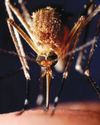
World's First Malaria Vaccine
The World Health Organization’s director-general hails ‘historic moment’ as mass immunisation of African children begins

Is River Pollution Putting The Species In Jeopardy Again?
Ten years ago, it was jubilantly announced that o ers had returned to every county in England. But is river pollution putting the species in jeopardy again?
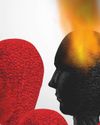
The Big Burnout
Long hours, low pay and a lack of appreciation — among other things — can make for a stressful workplace and lead to burnout. It’s something we should all be concerned about, because over half of the workforce reports feeling it

Putting Nature To Rights
More countries are enshrining the right to a clean environment into law. So if a company or government is impinging upon that right, you could take them to court
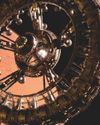
Mega Spaceship: Is It Possible For China To Build A Kilometre-Long Spacecraft?
Buoyed on by its successful Moon missions, China has launched a five-year study to investigate the possibility of building the biggest-ever spacecraft

Are We Getting Happier?
Enjoying more good days than bad? Feel like that bounce in your step’s getting bigger? HELEN RUSSELL looks into whether we’re all feeling more cheery…

“Unless the Japanese got the US off their backs in the Pacific, they believed they would face complete destruction”
Eighty years ago Japan’s surprise raid on Pearl Harbor forced the US offthe fence and into the Second World War. Ellie Cawthorne is making a new HistoryExtra podcast series about the attack, and she spoke to Christopher Harding about the long roots of Japan’s disastrous decision
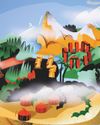
Your Mysterious Brain
Science has mapped the surface of Mars and translated the code for life. By comparison, we know next to nothing about what’s between our ears. Over the next few pages, we ask leading scientists to answer some of the most important questions about our brains…

Why Do We Fall In Love?
Is it companionship, procreation or something more? DR ANNA MACHIN reveals what makes us so willing to become targets for Cupid’s arrow
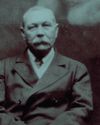
Detecting the dead
Following personal tragedy, the creator of that most rational of literary figures, Sherlock Holmes, developed an obsession with spiritualism. Fiona Snailham and Anna Maria Barry explore the supernatural interests of Sir Arthur Conan Doyle